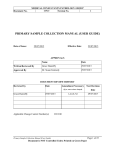Download QIAamp One-For-All Nucleic Acid Handbook
Transcript
April 2010 QIAamp® One-For-All Nucleic Acid Handbook For automated purification of nucleic acids from a wide range of sample types using the BioRobot® MDx or BioRobot Universal System Sample & Assay Technologies QIAGEN Sample and Assay Technologies QIAGEN is the leading provider of innovative sample and assay technologies, enabling the isolation and detection of contents of any biological sample. Our advanced, high-quality products and services ensure success from sample to result. QIAGEN sets standards in: Purification of DNA, RNA, and proteins Nucleic acid and protein assays microRNA research and RNAi Automation of sample and assay technologies Our mission is to enable you to achieve outstanding success and breakthroughs. For more information, visit www.qiagen.com. Contents Kit Contents 5 Storage 5 Product Use Limitations 6 Product Warranty and Satisfaction Guarantee 6 Safety Information 6 Technical Assistance 7 Quality Control 8 Introduction 9 Principle and procedure 10 Description of protocols 10 Equipment and Reagents to Be Supplied by User 12 Important Notes 13 Preparing RNA 13 Storing samples 13 Sample volumes 15 Elution volumes 15 Yield and size of nucleic acids 15 Carrier RNA 16 Preparing reagents and buffers 17 Preparing plasticware 22 Setting up the BioRobot MDx 24 Setting up the BioRobot Universal System 28 Protocols Pretreatment for Respiratory Samples 31 Pretreatment for Whole Blood 32 Pretreatment for Stool Suspensions 32 Pretreatment for Liquid Transport Media 33 Pretreatment for Urine 33 Pretreatment for Dried Blood Spots 33 Pretreatment for Tissues 34 Pretreatment for Swabs and Buccal Cells 34 QIAamp One-For-All Nucleic Acid Handbook 04/2010 3 Automated Purification of Nucleic Acids Using the BioRobot MDx 35 Automated Purification of Nucleic Acids Using the BioRobot Universal System 41 Troubleshooting Guide 43 Appendix A: General Remarks on Handling RNA 51 Appendix B: Calculating the Amount of Internal Control 53 Appendix C: Determination of Concentration, Yield, Purity, and Length of Genomic DNA 54 References 55 Ordering Information 56 4 QIAamp One-For-All Nucleic Acid Handbook 04/2010 Kit Contents QIAamp One-For-All Nucleic Acid Kit (12) Catalog no. 965672 Number of preps 12 x 96 QIAamp 96 Plates 12 S-Blocks 12 Caps for Elution Microtubes 3 x 50 Elution Microtubes CL 12 x 96 Disposable Troughs 3 x 10 Carrier RNA (red caps) 12 x 1350 μg QIAGEN® Protease 12 vials* Protease Solvent 12 x 6 ml Buffer AL† 12 x 33 ml Buffer AW1† (concentrate) 4 x 151 ml Buffer AW2‡ (concentrate) 4 x 127 ml 2 ml Tubes containing Buffer AVE‡ (purple caps) 108 x 2 ml Top Elute Fluid (orange caps) 48 x 1.48 ml Tape Pad 1 x 25 sheets Q-Card§ 1 Handbook 1 * Resuspension volume 6 ml. † Contains a guanidine salt. Not compatible with disinfectants containing bleach. See page 6 for safety information. ‡ Contains sodium azide as a preservative. § Do not discard the Q-Card. The information encoded in the bar code on the Q-Card is needed to start a run on the BioRobot MDx. Storage QIAamp 96 plates, lyophilized carrier RNA, lyophilized QIAGEN Protease, and all buffers can be stored dry at room temperature (15–25°C). The kit expiration date for storage at room temperature is printed on the Q-Card. QIAamp One-For-All Nucleic Acid Handbook 04/2010 5 Lyophilized QIAGEN Protease can be stored at room temperature (15–25°C) until the expiration date stated on the Q-Card in the kit, without decrease in performance. For longer storage or if ambient temperatures frequently exceed 25°C, QIAGEN Protease should be stored dry at 2–8°C. Reconstituted QIAGEN Protease is stable for 12 months when stored at 2–8°C. QIAGEN Protease stock solution should not be stored at room temperature for prolonged periods. Product Use Limitations The QIAamp One-For-All Nucleic Acid Kit is intended for molecular biology applications. This product is not intended for the diagnosis, prevention, or treatment of a disease. All due care and attention should be exercised in the handling of the products. We recommend all users of QIAGEN products to adhere to the NIH guidelines that have been developed for recombinant DNA experiments, or to other applicable guidelines. Product Warranty and Satisfaction Guarantee QIAGEN guarantees the performance of all products in the manner described in our product literature. The purchaser must determine the suitability of the product for its particular use. Should any product fail to perform satisfactorily due to any reason other than misuse, QIAGEN will replace it free of charge or refund the purchase price. We reserve the right to change, alter, or modify any product to enhance its performance and design. If a QIAGEN product does not meet your expectations, simply call your local Technical Service Department or distributor. We will credit your account or exchange the product — as you wish. Separate conditions apply to QIAGEN scientific instruments, service products, and to products shipped on dry ice. Please inquire for more information. A copy of QIAGEN terms and conditions can be obtained on request, and is also provided on the back of our invoices. If you have questions about product specifications or performance, please call QIAGEN Technical Services or your local distributor (see back cover or visit www.qiagen.com). Safety Information When working with chemicals, always wear a suitable lab coat, disposable gloves, and protective goggles. For more information, please consult the appropriate material safety data sheets (MSDSs). These are available online in convenient and compact PDF format at www.qiagen.com/Support/MSDS.aspx where you can find, view, and print the MSDS for each QIAGEN kit and kit component. 6 QIAamp One-For-All Nucleic Acid Handbook 04/2010 CAUTION: DO NOT add bleach or acidic solutions directly to the sample-preparation waste. Buffer AL and Buffer AW1 contain guanidine hydrochloride, which can form highly reactive compounds when combined with bleach. If liquid containing these buffers is spilt, clean with suitable laboratory detergent and water. If the spilt liquid contains potentially infectious agents, clean the affected area first with laboratory detergent and water, and then with 1% (v/v) sodium hypochlorite. The following risk and safety phrases apply to the components of the QIAamp One-For-All Nucleic Acid Kit. Buffer AL and Buffer AW1 Contain guanidine hydrochloride: harmful, irritant. Risk and safety phrases:* R22-36/38, S13-26-36-46 QIAGEN Protease Contains subtilisin: sensitizer, irritant. Risk and safety phrases:* R37/38-41-42, S22-24-26-36/37/39-46 24-hour emergency information Emergency medical information in English, French, and German can be obtained 24 hours a day from: Poison Information Center Mainz, Germany Tel: +49-6131-19240 Technical Assistance At QIAGEN, we pride ourselves on the quality and availability of our technical support. Our Technical Service Departments are staffed by experienced scientists with extensive practical and theoretical expertise in sample and assay technologies and the use of QIAGEN products. If you have any questions or experience any difficulties regarding the QIAamp One-For-All Nucleic Acid Kit or QIAGEN products in general, please do not hesitate to contact us. * R22: Harmful if swallowed; R36/38: Irritating to eyes and skin; R37/38: Irritating to respiratory system and skin; R41: Risk of serious damage to eyes; R42: May cause sensitization by inhalation; S13: Keep away from food, drink, and animal feedingstuffs; S22: Do not breathe dust; S24: Avoid contact with skin; S26: In case of contact with eyes, rinse immediately with plenty of water and seek medical advice; S36: Wear suitable protective clothing; S36/37/39: Wear suitable protective clothing, gloves and eye/face protection; S46: If swallowed, seek medical advice immediately and show container or label. QIAamp One-For-All Nucleic Acid Handbook 04/2010 7 QIAGEN customers are a major source of information regarding advanced or specialized uses of our products. This information is helpful to other scientists as well as to the researchers at QIAGEN. We therefore encourage you to contact us if you have any suggestions about product performance or new applications and techniques. For technical assistance and more information, please see our Technical Support Center at www.qiagen.com/Support or call one of the QIAGEN Technical Service Departments or local distributors (see back cover or visit www.qiagen.com). Quality Control In accordance with QIAGEN’s ISO-certified Quality Management System, each lot of QIAamp One-For-All Nucleic Acid Kit is tested against predetermined specifications to ensure consistent product quality. 8 QIAamp One-For-All Nucleic Acid Handbook 04/2010 Introduction The QIAamp One-For-All Nucleic Acid Kit uses well-established technology for purification of viral DNA and RNA, bacterial DNA, and genomic DNA from a broad range of sample types (Table 1). The kit combines the selective binding properties of a silica-based membrane with a high-throughput 96-well format, and is designed for fully automated, simultaneous processing of 96 samples on the BioRobot MDx or BioRobot Universal System. Nucleic acids are eluted in Buffer AVE, ready for use in amplification reactions or storage at –20°C. Purified nucleic acids are free of proteins, nucleases, and other impurities. The fully automated process, including bar code reading,* load check, sample tracking, and complete process documentation, requires less than 2.5 hours to process 96 samples, with no hands-on time. Turnaround time between consecutive runs is about 10 minutes. Table 1. Sample types compatible with the QIAamp One-For-All Nucleic Acid Kit Sample type Plasma and serum† Cell-free body fluids†‡ Whole blood†§ Liquid transport media Urine and stool suspension Dried blood spots Tissue Swabs and buccal cells Respiratory samples¶ † ‡ § ¶ Samples can be fresh or frozen, provided they have not been frozen and thawed more than once. Includes amniotic fluid, cerebrospinal fluid, ocular fluid, synovial fluid, and pleural fluid. Includes samples containing EDTA, citrate, or heparin. Includes nasopharyngeal aspirates (NPA), bronchoalveolar lavage (BAL) fluid, sputum, nasal swabs, and throat swabs. * Bar code reading is carried out automatically by the BioRobot MDx, but not by the BioRobot Universal System. Depending on the protocol, it is possible for users of the BioRobot Universal System to enter bar codes manually. QIAamp One-For-All Nucleic Acid Handbook 04/2010 9 Principle and procedure Samples are lysed under highly denaturing conditions at elevated temperatures. Lysis is performed in the presence of QIAGEN Protease and Buffer AL, which together ensure inactivation of RNases. Binding conditions are adjusted by adding ethanol. Lysates are then transferred to a QIAamp 96 plate, where nucleic acids are adsorbed onto the silica membranes as the lysates are drawn through under vacuum. Nucleic acids bound to the membranes are efficiently washed in 3 steps under vacuum. Different wash buffers are used, which considerably improves the purity of the eluted nucleic acids. Highly pure nucleic acids are eluted under vacuum in a single step in Buffer AVE equilibrated to room temperature. Recovery is enhanced by overlaying the elution buffer with Top Elute Fluid. Description of protocols This handbook contains 2 types of protocol: Pretreatment protocols (pages 31–34) Nucleic acid purification protocols (pages 35 and 41) Pretreatment protocols Since the type of samples that can be processed using the QIAamp One-For-All Nucleic Acid Kit can vary greatly, there is also a variety of different pretreatment protocols, optimized for specific sample types. When working with respiratory samples, whole blood, stool suspensions, liquid transport media, urine, dried blood spots, tissues, and swabs and buccal cells, pretreat the samples as described in the pretreatment protocols (pages 31–34). After pretreatment, samples are then processed as described in the nucleic acid purification protocols (pages 35 and 41). For plasma, serum, CSF, and other cell-free body fluids, no pretreatment is required. Proceed directly to the nucleic acid purification protocols (pages 35 and 41). Note: The pretreatment protocols have been optimized by customers and have not been thoroughly validated by QIAGEN R&D. Nucleic acid purification protocols There is one nucleic acid purification protocol for the BioRobot MDx (page 35), and another for the BioRobot Universal System (page 41). Each protocol describes how to set up the BioRobot workstation and start a fully automated run. 10 QIAamp One-For-All Nucleic Acid Handbook 04/2010 QIAamp One-For-All Nucleic Acid Procedure Check reagents Scan sample bar codes* Aliquot QIAGEN Protease, transfer samples, and add Buffer AL Lysis in cooling and heating system Add ethanol Transfer lysates Wash with Buffer AW1 Wash with Buffer AW2 Wash with ethanol Dry QIAamp 96 plate Heating Add Buffer AVE and Top Elute Fluid for elution Purified nucleic acids * Bar code scanning possible on the BioRobot MDx only. QIAamp One-For-All Nucleic Acid Handbook 04/2010 11 Equipment and Reagents to Be Supplied by User When working with chemicals, always wear a suitable lab coat, disposable gloves, and protective goggles. For more information, consult the appropriate material safety data sheets (MSDSs), available from the product supplier. BioRobot MDx (cat. no. 900600) or BioRobot Universal System (cat. no. 9001094) Disposable Filter-Tips, 1100 μl (960) (cat. no. 9012598) Ethanol (96–100%)* Deionized water For pretreatment of respiratory samples Sputasol (Oxoid Limited; www.oxoid.com) and 37°C water bath, or NAC buffer (10 g N-acetylcysteine per liter of 0.9% NaCl solution), or PBS or Buffer AE (cat. no. 19077), DTT, and 37°C water bath For pretreatment of whole blood samples PBS (for dilution of samples with a high cell count) For pretreatment of stool samples 0.89% saline solution For pretreatment of liquid transport media, urine, dried blood spots, and tissues Buffer ATL (cat. no. 19076) QIAGEN Proteinase K (2 ml) (cat. no. 19131) or QIAGEN Proteinase K (10 ml) (cat. no. 19133) * Do not use denatured alcohol, which contains other substances such as methanol or methylethylketone. 12 QIAamp One-For-All Nucleic Acid Handbook 04/2010 Important Notes Preparing RNA When preparing viral RNA, work quickly during the manual steps of the procedure. If you have not previously worked with RNA, read Appendix A on page 51 before starting. Buffer AVE is RNase-free upon delivery. It contains sodium azide, an antimicrobial agent that prevents growth of RNase–producing organisms. However, as this buffer does not contain any RNase inhibitors, it will not actively inhibit RNases introduced by inappropriate handling. Extreme care should be taken to avoid contamination with RNases when handling Buffer AVE. Storing samples Plasma and serum samples After collection, centrifugation, and phase separation, plasma or serum can be stored at 2–8°C for up to 6 hours. For long-term storage, freezing at –20°C or –80°C in aliquots is recommended. Frozen plasma or serum samples must not be thawed more than once. Repeated freeze–thawing leads to reduced viral titers and therefore reduced yields of viral nucleic acids. Freezing of samples can lead to denaturation and precipitation of proteins that may clog the QIAamp 96 plate membrane. If cryoprecipitates are visible, they can be pelleted by centrifugation at 6800 x g for 3 minutes. The cleared supernatant should be transferred to a new sample tube without disturbing the pellet and processed immediately. This step will not reduce viral titers. Blood samples Whole blood samples treated with EDTA,* citrate,* or heparin* can be used, and may be fresh or frozen, provided they have not been frozen and thawed more than once. Yield and quality of the purified nucleic acids depend on the storage conditions of the blood. Fresher blood samples yield better results. For long-term storage, we recommend collecting blood samples in tubes containing anticoagulant and storing at –70°C. * When working with chemicals, always wear a suitable lab coat, disposable gloves, and protective goggles. For more information, consult the appropriate material safety data sheets (MSDSs), available from the product supplier. QIAamp One-For-All Nucleic Acid Handbook 04/2010 13 Repeatedly frozen and thawed samples, samples stored at room temperature for extended periods, or samples containing visible precipitates should not be processed, as they may clog the QIAamp 96 plate membrane. Although clots and clogs are detected and managed by the BioRobot MDx and BioRobot Universal System during runs, their presence will increase run time and consumption of tips (if using automatic clog detection). The number of tips loaded onto the worktable allows automatic detection and removal of up to 24 clogged samples in each run of 96 samples. Dried blood spots Drying blood on filter paper is an effective form of storage, and samples prepared in this manner are cheaper and safer to transport. A disc (3 mm diameter) punched out from filter paper stained with dried blood contains white blood cells from approximately 5 μl whole blood. To collect blood samples, we recommend using QIAcard™ FTA® Spots, which provide proven Whatman® FTA technology to simplify the handling and processing of nucleic acids. After applying samples to QIAcard FTA Spots, DNA is stabilized in situ for years at room temperature. The QIAcard FTA Spots can be easily transported, archived, or processed immediately. Multibarrier pouches and desiccant provide safe and convenient transport and storage of QIAcard FTA Spots. Harris UNI-CORE Punches are recommended for punching QIAcard FTA Spots. With proper handling, the punches prevent sample carryover. For ordering information, see page 57. Alternatively, blood samples can be collected using the following equipment: 903® Specimen Collection Paper (Schleicher & Schuell, cat. no. 10535104); 903 Generic Blood Collection Card (Schleicher & Schuell, cat. no. 10519015); FTA Classic Card (Whatman, cat. no. WB120305); Manual paper punch, 3 mm (Schleicher & Schuell, cat. no. 10495010).* Swabs Swabs may be processed on the same day as collection or stored for future processing. While storage at –20°C is recommended, DNA of suitable quality for single-copy gene amplification has been documented from swabs stored at room temperature for 24 months. QIAGEN provides sterile foam-tipped swabs for collection of saliva and buccal cells. The nonabrasive foam head is the same size as the sample area on QIAcard FTA Indicator Four Spots to facilitate sample application. For ordering information, see page 57. * This is not a complete list of suppliers and does not include many important vendors of biological supplies. 14 QIAamp One-For-All Nucleic Acid Handbook 04/2010 Alternatively, samples can be collected using plastic swabs with cotton or Dacron® tips. Puritan® applicators with plastic shafts and cotton or Dacron tips are available from Hardwood Products Company (www.hwppuritan.com, item nos. 25-806 1PC and 25-806 1PD) and from Daigger (www.daigger.com, cat. nos. EF22008D and EF22008DA).* Nylon cytology brushes and other swab types may also be used. Sample volumes The procedure is optimized for use with samples of about 263 μl.† The BioRobot MDx and BioRobot Universal System are capable of removing this volume from tubes of various sizes, such as CryoTubes™ or BD Vacutainer® tubes containing a minimum sample volume of 500 μl. Special tube holders are available upon request. Elution volumes The procedure provides elution of nucleic acids in a single step. During setup of the BioRobot MDx and BioRobot Universal System, the QIAsoft softwore allows the user to adjust the elution volume (65–130 μl). The default elution volume is 100 μl, which leads to approximately 91 μl Buffer AVE being pipetted onto each membrane. Using the default elution volume of 100 μl, the mean volume of nucleic acid eluate recovered after vacuum elution is 83 μl for plasma samples; for other samples, the mean eluate volume varies from 60 to 90 μl depending on the nature of the sample. Yield and size of nucleic acids Viral DNA and RNA Yields of viral nucleic acids isolated from plasma, serum, CSF, and other cellfree body fluids are normally below 1 μg and are therefore difficult to determine with a spectrophotometer. Quantitative amplification methods are recommended for determination of yields. When quantifying nucleic acids isolated using the QIAamp One-For-All Nucleic Acid Kit, remember that in most cases there will be much more carrier RNA than viral nucleic acids in the sample. In addition, when purifying nucleic acids from whole blood, stool suspension, and other nucleic acid-rich sample types, there will be much more genomic or bacterial DNA than viral nucleic acids. * This is not a complete list of suppliers and does not include many important vendors of biological supplies. † A volume of 263 μl is processed when working with plasma samples. For other sample types (e.g., viscous samples), the volume processed may be less. QIAamp One-For-All Nucleic Acid Handbook 04/2010 15 The size distribution of viral nucleic acid purified with this procedure can be checked by agarose gel electrophoresis and hybridization to a virus-specific labeled probe followed by autoradiography (Sambrook, J. and Russell, D.W. [2001] Molecular Cloning: A Laboratory Manual, 3rd ed. Cold Spring Harbor, NY: Cold Spring Harbor Laboratory Press). Bacterial and genomic DNA DNA purified using the QIAamp One-For-All Nucleic Acid Kit is up to 50 kb in size, with fragments of approximately 20–30 kb predominating. DNA of this length denatures completely during thermal cycling and can be amplified very efficiently. The actual yield of DNA obtained will depend on sample type, sample storage, and the nucleic acid content of the sample. Carrier RNA Carrier RNA serves 2 purposes. Firstly, it enhances binding of viral nucleic acids to the QIAamp membrane, especially if there are very few target molecules in the specimen. Secondly, the addition of large amounts of carrier RNA reduces the chance of viral RNA degradation in the rare event that RNase molecules escape denaturation by the chaotropic salts and detergent in Buffer AL. Thus, not adding carrier RNA to Buffer AL may reduce the recovery of viral RNA or DNA from samples of low nucleic acid content (e.g., plasma, serum, and CSF). When purifying nucleic acids from cell- or nucleic acid-rich samples (e.g., whole blood), the addition of carrier RNA is not necessary as sufficient genomic or bacterial DNA is present in these samples. If nucleic acid-rich samples and samples of very low nucleic acid content (e.g., plasma, serum, and CSF) are processed in the same run, we recommend adding a reduced amount of carrier RNA (e.g., 1–2 μg per sample). Sufficient lyophilized carrier RNA is provided for the volume of Buffer AL supplied with the kit. The concentration of carrier RNA used in the QIAamp One-For-All Nucleic Acid procedure allows the QIAamp One-For-All Nucleic Acid Kit to be used as a generic purification system for a wide range of RNA and DNA viruses. The concentration of RNA in the final eluates is compatible with many amplification systems. Different amplification systems vary in efficiency depending on the total amount of nucleic acid present in the reaction. Eluates from this kit contain viral nucleic acids and carrier RNA (if carrier RNA was added to Buffer AL). The amount of carrier RNA present will greatly exceed the amount of viral nucleic acids. Calculations of how much eluate to add to downstream amplification reactions should therefore be based on the amount of carrier RNA added to the samples. To obtain maximum sensitivity in amplification reactions, it may be necessary to adjust the amount of carrier RNA added to Buffer AL. 16 QIAamp One-For-All Nucleic Acid Handbook 04/2010 Preparing reagents and buffers Important: Sufficient reagents are supplied to isolate nucleic acids from 12 x 96 samples. If fewer than 96 samples are processed in each run, additional reagents must be purchased to process the same number of samples in total (see below for details). QIAGEN Protease For runs of 96 samples: One vial of lyophilized QIAGEN Protease and Protease Solvent is supplied for each run of 96 samples. Add one bottle (6 ml) of Protease Solvent to a vial of lyophilized QIAGEN Protease, and mix carefully to avoid foaming. Make sure that the Protease Solvent is transferred completely and the QIAGEN Protease is fully dissolved. For runs of fewer than 96 samples: If runs contain 8–88 samples, each vial of lyophilized QIAGEN Protease and Protease Solvent has to be reused. Add one bottle (6 ml) of Protease Solvent to a vial of lyophilized QIAGEN Protease, and mix carefully to avoid foaming. Make sure that the Protease Solvent is transferred completely and the QIAGEN Protease is fully dissolved. After the run, seal the vial and store the unused portion of the reconstituted QIAGEN Protease at 2–8°C for use in subsequent runs. Table 2 shows the minimum volume of reconstituted QIAGEN Protease needed to process 8–88 samples. QIAamp One-For-All Nucleic Acid Handbook 04/2010 17 Table 2. Minimum volume of QIAGEN Protease required for the given number of samples No. of samples Volume of reconstituted QIAGEN Protease (ml) 8 2.1 16 2.5 24 2.8 32 3.2 40 3.5 48 3.9 56 4.2 64 4.6 72 4.9 80 5.3 88 5.6 Buffer AL The method of preparing Buffer AL depends on the sample type. For samples of low nucleic acid content (e.g., plasma, serum, viral transport medium, CSF, and other cell-free starting material), carrier RNA should be added to Buffer AL (see below). For nucleic acid-rich samples such as whole blood or stool suspension, addition of carrier RNA to Buffer AL is not necessary (see page 20). Buffer AL–carrier RNA mix (for samples of low nucleic acid content) Lyophilized carrier RNA is stable when stored at room temperature (15–25°C). Note that carrier RNA does not dissolve in Buffer AL. It must first be dissolved in Buffer AVE and then either added immediately to Buffer AL or stored at –20°C. Once added to Buffer AL, carrier RNA is stable at 2–8°C for up to 48 hours. To dissolve carrier RNA, add 450 μl of Buffer AVE to one vial containing 1350 μg lyophilized carrier RNA, and mix. Use Buffer AVE from an unopened tube, and discard the unused portion. One tube of Buffer AVE is provided for each tube of carrier RNA. Always prepare a fresh aliquot of Buffer AL–carrier RNA solution for each run. Sufficient Buffer AL–carrier RNA is supplied with the kit for 12 runs of 96 samples each. 18 QIAamp One-For-All Nucleic Acid Handbook 04/2010 For runs of 96 samples: Transfer 230 μl of carrier RNA reconstituted in Buffer AVE to one bottle containing 33 ml Buffer AL to give a final concentration of 5.6 μg carrier RNA per preparation. Gently mix by inverting the bottle 10 times. To avoid foaming, do not vortex. For runs of fewer than 96 samples: The QIAsoft software indicates during setup of the BioRobot MDx and BioRobot Universal System how much Buffer AL reconstituted with carrier RNA is required before a purification run is started. Transfer the volume of Buffer AL given in Table 3 into a 50 ml tube (not provided), and add the appropriate volume of carrier RNA dissolved in Buffer AVE. Gently mix by inverting the tube 10 times. To avoid foaming, do not vortex. Buffer AL is viscous, and a portion of the mix may therefore be lost during transfer, but this is accounted for in the procedure. Approximately 2.7 ml Buffer AL (dead volume) is left in the disposable trough at the end of each run. Therefore, processing 96 samples over more than one run (e.g., 2 runs of 48 samples each) will require more buffer than a single run of 96 samples. If runs with fewer than 96 samples are frequently performed, additional Buffer AL should be purchased (see page 57 for ordering information). Table 3. Volumes of Buffer AL and carrier RNA dissolved in Buffer AVE required for the given number of samples Volume of Buffer AL (ml) Volume of dissolved carrier RNA (μl) 8 6.4 44.6 16 8.9 62.0 24 11.3 78.7 32 13.8 96.0 40 16.2 113.1 48 18.7 130.2 56 21.1 147.4 64 23.6 164.5 72 26.1 181.6 80 28.5 198.7 88 31.0 215.8 No. of samples QIAamp One-For-All Nucleic Acid Handbook 04/2010 19 Note: Using the volumes listed in Table 3 gives a final concentration of 5.6 μg carrier RNA per preparation. In some amplification systems, using less carrier RNA may improve results. For each microgram of carrier RNA required per preparation, add 40.75 μl carrier RNA reconstituted in Buffer AVE to the bottle containing 33 ml Buffer AL, or add 1.235 μl carrier RNA solution per milliliter of Buffer AL if performing less than 96 preparations. Buffer AL without carrier RNA (for nucleic acid-rich samples) Buffer AL is supplied as a single reagent and should be stored at 15–25°C. For runs of 96 samples: One bottle of Buffer AL is supplied for each run of 96 samples. Mix by shaking the bottle carefully before use, avoiding extensive foaming. Open the bottle and slowly pour the entire contents into a disposable trough. Remove any large bubbles with a pipet tip. For runs of fewer than 96 samples: Sufficient Buffer AL is supplied for 12 runs of 96 samples. For runs of 8–88 samples, one bottle of Buffer AL has to be reused. The QIAsoft software indicates how much Buffer AL is required during setup of the BioRobot MDx and BioRobot Universal System before a purification run is started. Transfer the indicated volume of Buffer AL into a disposable trough. Remove any large bubbles with a pipet tip. Note that processing 96 samples divided over more than one run will require more buffer than one 96-sample run. If runs of fewer than 96 samples are performed, additional Buffer AL must be purchased (see ordering information, page 57). Internal control Using the QIAamp One-For-All Nucleic Acid procedure in combination with commercially available amplification systems may require the introduction of an internal control into the purification procedure. Internal controls should be added together with carrier RNA to the lysis buffer. For optimal purification, internal–control molecules should be more than 200 nucleotides long, as smaller molecules are not recovered efficiently. Refer to Appendix B, page 53, to determine the optimal concentration of internal control to add to Buffer AL. Using a concentration other than that recommended may reduce amplification efficiency. Buffer AW1 Add 200 ml of ethanol (96–100%) to a bottle containing 151 ml of Buffer AW1 concentrate, as described on the bottle. Tick the check box on the label of the bottle to indicate that ethanol has been added. Sufficient Buffer AW1 is supplied for 12 runs of 96 samples. One bottle of reconstituted Buffer AW1 contains enough wash buffer for 3 runs of 96 samples. Buffer AW1 left over after a run should be stored at room temperature (15–25°C) for the next run. 20 QIAamp One-For-All Nucleic Acid Handbook 04/2010 Note: Always mix reconstituted Buffer AW1 by shaking the bottle before starting the procedure. For easy identification on the BioRobot MDx and BioRobot Universal System, the Buffer AW1 bottle has a bar code on its label. The open bottle should be placed in the reagent carousel with the bar code facing the outside. Approximately 30 ml of Buffer AW1 is used to flush the system tubing during each run, and this volume remains constant regardless of the number of samples to be purified. Note that processing 96 samples divided over more than one run (e.g., two 48-sample runs) will require more buffer than one 96-sample run. If runs of fewer than 96 samples are often performed, additional Buffer AW1 must be purchased (see ordering information, page 57). Buffer AW2 Add 300 ml of ethanol (96–100%) to a bottle containing 127 ml of Buffer AW2 concentrate, as described on the bottle. Tick the check box on the label of the bottle to indicate that ethanol has been added. Sufficient Buffer AW2 is supplied for 12 runs of 96 samples. One bottle of reconstituted Buffer AW2 contains enough wash buffer for 3 runs of 96 samples. Buffer AW2 left over after a run should be stored at room temperature (15–25°C) for the next run. Note: Always mix reconstituted Buffer AW2 by shaking the bottle before starting the procedure. For easy identification on the BioRobot MDx and BioRobot Universal System, the Buffer AW2 bottle has a bar code on its label. The open bottle should be placed in the reagent carousel with the bar code facing the outside. Approximately 30 ml of Buffer AW2 is used to flush the system tubing during each run, and this volume remains constant regardless of the number of samples to be purified. Note that processing 96 samples divided over more than one run (e.g., two 48-sample runs) will require more buffer than one 96-sample run. If runs of fewer than 96 samples are often performed, additional Buffer AW2 must be purchased (see ordering information, page 57). Ethanol Before starting a run, fill the 500 ml bottle for ethanol (supplied with the BioRobot MDx and BioRobot Universal System) with ethanol (96–100%). Add 500 μl of reconstituted Buffer AW2 to a bottle containing 500 ml of ethanol (1:1000 dilution), to allow the BioRobot MDx and BioRobot Universal System to detect the fill level in the ethanol bottle by conductivity measurements. One bottle of ethanol contains enough ethanol for 2 runs of 96 samples. Ethanol left over after a run should be stored at room temperature (15–25°C) for the next run. QIAamp One-For-All Nucleic Acid Handbook 04/2010 21 For easy identification on the BioRobot MDx and BioRobot Universal System, the ethanol bottle has a bar code on its label. The open bottle should be placed in the reagent carousel with the bar code facing the outside. Buffer AVE (purple caps) For one run of 96 samples, 8 tubes of Buffer AVE (2 ml each) are required. If you intend to purify RNA, always wear a fresh pair of gloves when handling Buffer AVE. Buffer AVE is stable when stored at room temperature (15–25°C). During setup of the BioRobot MDx and BioRobot Universal System, the opened tubes of Buffer AVE should be placed on the worktable. Buffer AVE left over after a run should be discarded. Note: Buffer AVE is RNase-free upon delivery. Take great care to avoid contaminating Buffer AVE with RNases during handling. If 48–96 samples are prepared at a time, it is still necessary to place all 8 tubes of Buffer AVE containing 2 ml of Buffer AVE each onto the worktable. If runs of fewer than 96 samples are performed, additional Buffer AVE must be purchased (see ordering information, page 57). If less than 48 samples are run, only 4 tubes of Buffer AVE should be used. Top Elute Fluid (orange caps) For one run of 96 samples, 4 tubes of Top Elute Fluid (1.48 ml each) are required. Top Elute Fluid is stable when stored at room temperature (15–25°C). During setup of the BioRobot MDx and BioRobot Universal System, the opened tubes of Top Elute Fluid should be placed on the worktable. Top Elute Fluid left over after a run should be discarded and should not be reused for subsequent runs. Even if fewer than 96 samples are prepared at a time, it is still necessary to place all 4 tubes containing 1.48 ml of Top Elute Fluid each onto the worktable. If runs of fewer than 96 samples are performed, it will be necessary to purchase additional Top Elute Fluid (see ordering information, page 57). Preparing plasticware S-Blocks Twelve S-Blocks are supplied with the kit. One S-Block is used in each run of 96 samples. When loading the BioRobot worktable before starting a protocol run, make sure that position A1 is located at the upper-left corner. Discard the S-Block after use. 22 QIAamp One-For-All Nucleic Acid Handbook 04/2010 Disposable troughs Thirty disposable troughs are supplied with the kit. For each run, 2 disposable troughs are required. Discard the disposable troughs after use. Elution Microtubes CL Twelve racks of Elution Microtubes CL are supplied with the kit. For each run, one rack of elution microtubes is required. During setup, make sure that the bar code of the elution microtube rack faces to the right. After sample preparation, the eluates should be directly used in downstream applications or stored for up to 24 hours at 2–8°C. For longer storage, the eluates should be stored at –20°C or –80°C. QIAamp 96 plates Twelve QIAamp 96 plates are supplied with the kit. For each run, one QIAamp 96 plate is required. During setup, make sure that position A1 is located at the upper-left corner. Discard the QIAamp 96 plate after use. Tape pad Tape sheets from the tape pad are used to seal unused wells of the QIAamp 96 plate if fewer than 96 samples are to be processed in a run. Partially using a QIAamp 96 plate The QIAamp 96 plate can be used for runs of 8–96 samples (sample number must be a multiple of 8). If only part of a QIAamp 96 plate is used (e.g., the first 48 wells), seal the unused wells with a sheet from the tape pad, and leave them sealed throughout the purification procedure. Ensure that complete columns of 8 samples are processed. After use, keep the unused wells sealed, and store the QIAamp 96 plate at 4°C in the blister pack in which it was supplied. When reusing partially used plates, label used wells with a waterproof marker pen, and remove the tape sheet covering the unused wells. Cover the previously used wells with a tape sheet from the tape pad before beginning the purification procedure. Note: To avoid reduction in performance, avoid using the same QIAamp 96 plate more than 3 times. QIAamp One-For-All Nucleic Acid Handbook 04/2010 23 Setting up the BioRobot MDx The QIAsoft MDx software guides you through worktable setup. For a summary of worktable setup, see Tables 4, 5, and 6 below and Figure 1 on page 27. Table 4. Loading plasticware and accessories Item Position Holder/adapter Elution Microtubes CL Reagent holder for microtubes and trough Blue elution microtube adapter Disposable trough MP Slot 2 Reagent holder for 2 troughs (EtOH and AL) QIAamp 96 plate QIAplate Slot Silver multiwell-plate holder Channeling adapter Channeling Adapter Slot Black multiwell-plate holder S-Block Cooling and heating system Silver heat transfer adapter Disposable tips Varies with sample number (see page 26) Red tip-tray holder Vacuum manifold lid To the right of the vacuum manifold base Vacuum manifold top To the right of the vacuum manifold base, and over the vacuum manifold lid 24 QIAamp One-For-All Nucleic Acid Handbook 04/2010 Table 5. Loading buffers and reagents Item Position Volume Buffer AL*† Disposable trough in reagent holder for 2 troughs (position AL) Varies with sample number (see page 26) QIAGEN Protease‡ Reagent holder for 1 bottle (QP) Varies with sample number (see page 26) Buffer AVE* Reagent holder for microtubes and trough (position AVE) Four to eight 2 ml microcentrifuge tubes (purple caps) Top Elute Fluid (TOPE)*§ Reagent holder for microtubes and trough (position TOPE) Four 1.5 ml microcentrifuge tubes (orange caps) Buffer AW1* Reagent carousel Minimum of 164 ml (reconstituted) Buffer AW2* Reagent carousel Minimum of 191 ml (reconstituted) Ethanol Reagent carousel Minimum of 350 ml System liquid Reagent carousel Minimum of 700 ml deionized water Samples Sample tracking system Minimum of 500 μl sample in each tube. Always use 12 tube holders. * Remember that buffer consumption is calculated assuming that 96 samples are processed in each run. If runs of fewer than 96 samples are performed, additional Top Elute Fluid, carrier RNA, and Buffers AL, AW1, AW2, and AVE must be purchased. † Contains carrier RNA and internal control when purifying nucleic acids from samples of low nucleic acid content. ‡ Reconstituted in 6 ml Protease Solvent. § Presence of TOPE is not monitored in the load check. QIAamp One-For-All Nucleic Acid Handbook 04/2010 25 Table 6. Variations with different numbers of samples Tip position* No. of (no clog samples check) Tip Tip Volume of position* position* Volume reconstituted (visual clog (automatic of Buffer QIAGEN check) clog check) AL (ml) Protease (ml) 8 1 1 1 6.4 2.1 16 1, 2 1, 2 1, 2 8.9 2.5 24 1, 2 1, 2, 4 1, 2, 4 11.3 2.8 32 1, 2, 4 1, 2, 4–5 1, 2, 4–5 13.8 3.2 40 1, 2, 4 1, 2, 4–5 1, 2, 4–5 16.2 3.5 48 1, 2, 4–5 1, 2, 4–6 1, 2, 4–6 18.7 3.9 56 1, 2, 4–5 1, 2, 4–6 1, 2, 4–6 21.1 4.2 64 1, 2, 4–5 1, 2, 4–6 1, 2, 4–7 23.6 4.6 72 1, 2, 4–6 1, 2, 4–7 1, 2, 4–7 26.1 4.9 80 1, 2, 4–6 1, 2, 4–7 1, 2, 4–8 28.5 5.3 88 1, 2, 4–7 1, 2, 4–8 1, 2, 4–8 31.0 5.6 96 1, 2, 4–7 1, 2, 4–8 1, 2, 4–8 33.0 6.0 * See Figure 1 for the tip positions. 26 QIAamp One-For-All Nucleic Acid Handbook 04/2010 Tip-tray holders Black Silver multiwellmultiwellplate holder plate holder (holds the (holds a channeling QIAamp 96 adapter) plate) Vacuum manifold base Vacuum manifold lid Vacuum manifold top Cooling and heating system Reagent holder for 1 bottle QP Reagent holder for microtubes and trough Position TOPE Position AVE Elution Microtubes CL (on elution microtube adapter) Sample tracking system Reagent holder for 2 troughs (position EtOH) Reagent holder for 2 troughs (position AL) Figure 1. BioRobot MDx worktable. Overview of the BioRobot MDx worktable and its main components. Refer to Tables 4–6 for more details. QIAamp One-For-All Nucleic Acid Handbook 04/2010 27 Setting up the BioRobot Universal System The QIAsoft 5 software guides you through worktable setup. For a summary of worktable setup, see Tables 7 and 8 below and Figure 2 on page 30. Note: There are various customized protocols available for automation of the QIAamp One-For-All Nucleic Acid Kit on the BioRobot Universal System. The worktable setup described in this section may differ slightly from that required by the customized protocol installed on your BioRobot Universal System. For proper worktable setup on your BioRobot Universal System, follow the on-screen instructions displayed by your customized protocol. Table 7. Loading plasticware and accessories Item Position Holder/adapter Elution Microtubes CL MP Slot 21 Blue elution microtube adapter Disposable trough Subslot A of MP Slot 9, Trough holder in and Subslot C of MP Slot reagent-holder tray 9 QIAamp 96 plate QIAplate Holder silver 11 Silver multiwell-plate holder Channeling adapter QIAplate Holder black 16 Black multiwell-plate holder S-Block Cooling and heating system (VariTherm Slot) Silver heat transfer adapter Disposable tips Varies with sample number Red tip-tray holder Vacuum manifold lid To the right of the vacuum manifold base Vacuum manifold top To the right of the vacuum manifold base, and over the vacuum manifold lid 28 QIAamp One-For-All Nucleic Acid Handbook 04/2010 Table 8. Loading buffers and reagents Item Position Buffer AL*† 20 ml disposable trough in the 1-trough reagent holder (Subslot A of MP Slot 9) QIAGEN Protease‡ 14 ml BD Falcon tube in position A of the 4-tube reagent holder (Subslot C of MP Slot 8) Buffer AVE* If processing more than 48 samples: Positions A, B, C, D, E, F, G, and H of the 8-tube reagent holder (2 ml) (Subslot A of MP Slot 8) If processing 48 samples or less: Positions A, C, E, and G of the 8-tube reagent holder (2 ml) (Subslot A of MP Slot 8) Top Elute Fluid*§ Positions A, C, E, and G of the 8-tube reagent holder (1.5 ml) (Subslot B of MP Slot 8) Buffer AW1* Reagent carousel Buffer AW2* Reagent carousel Ethanol Reagent carousel System liquid Reagent carousel Samples¶ 24-tube shaker adapter (high-speed shaker system) * Remember that buffer consumption is calculated assuming that 96 samples are processed in each run. If runs of fewer than 96 samples are performed, additional Top Elute Fluid, carrier RNA, and Buffers AL, AW1, AW2, and AVE must be purchased. † Contains carrier RNA and internal control when purifying nucleic acids from samples of low nucleic acid content. ‡ Reconstituted in 6 ml Protease Solvent. § Presence of Top Elute Fluid is not monitored in the load check. ¶ Depending on the customized protocol installed on your BioRobot Universal System, samples may have to be loaded onto the worktable differently. QIAamp One-For-All Nucleic Acid Handbook 04/2010 29 Tip-tray holders (1100 μl tips) Silver multiwell-plate holder (QIAamp 96 plate) Black multiwell-plate holder (channeling adapter) Blue elution microtube adapter (Elution Microtubes CL) Vacuum manifold top Reagent holder for 8 tubes (2 ml); Subslot A (Buffer AVE) Vacuum manifold lid Reagent holder for 8 tubes (1.5 ml); Subslot B (Top Elute Fluid) Shaker adapter for 24 tubes (sample tubes) Reagent holder for 4 tubes; Subslot C (QIAGEN Protease) Reagent holder for 1 trough (Buffer AL) Reagent holder for 1 trough (ethanol) Silver heat transfer adapter on cooling and heating system (S-Block) Figure 2. BioRobot Universal System worktable. Overview of the BioRobot Universal System worktable and its main components. Refer to Tables 7 and 8 for more details. 30 QIAamp One-For-All Nucleic Acid Handbook 04/2010 Protocol: Pretreatment for Respiratory Samples This protocol is intended for viscous respiratory samples. Nonviscous respiratory samples require no pretreatment and can be used directly as starting material in the nucleic acid purification protocols (pages 35 and 41). Procedure 1. Liquefy the sample according to step 1a, 1b, or 1c. 1a. Add 1 volume of Sputasol solution to 1 volume of sample, and shake well. Place in a 37°C water bath, and incubate with periodic shaking until the sample is completely liquefied. 1b. Mix 1 volume of sample with 1 volume of NAC buffer (10 g N-acetylcysteine per liter of 0.9% NaCl solution). If the sample is very viscous or solid (e.g., when working with lower respiratory samples), try to disrupt it mechanically by pipetting up and down. Incubate at room temperature (15–25°C) for 30 min with constant shaking. For easier pipetting, it may be necessary to cut off the end of the pipette tip. If the sample is solid, the incubation time needs to be increased to completely liquefy the sample. 1c. Mix 1 volume of sample with 1 volume of 1x PBS or Buffer AE (cat. no. 19077). Add freshly prepared DTT to a final concentration of 0.15% (w/v). Incubate the sample at 37°C until the sample is completely liquefied. 2. Centrifuge the liquefied sample to pellet debris, and transfer the clear supernatant to a clean tube. 3. Proceed to the nucleic acid purification protocol (page 35 or 41). QIAamp One-For-All Nucleic Acid Handbook 04/2010 31 Protocol: Pretreatment for Whole Blood Things to do before starting Read “Blood samples” on page 13. Procedure 1. Check whether the blood sample has separated into 2 phases: an upper plasma phase containing low amounts of DNA, and a lower cell-dense phase containing large amounts of DNA. 2. If phase separation has occurred, mix the sample thoroughly (e.g., by inverting the tube several times). 3. Count the number of cells. If the cell count is greater than 3 x 107 cells per milliliter, dilute the sample with PBS so that the cell count is below 3 x 107 cells per milliliter. Animal blood often has very high cell counts. 4. If necessary, mix the sample again, and proceed immediately to the nucleic acid purification protocol (page 35 or 41). Protocol: Pretreatment for Stool Suspensions Procedure 1. Mix 1 volume of stool with 9 volumes of 0.89 % saline. 2. Vortex vigorously to prepare a homogeneous suspension. 3. Centrifuge the suspension to pellet debris, and transfer the clear supernatant to a clean tube. Note: Depending on the bacteria species and the speed of centrifugation, bacteria will be present in the pellet. 4. Proceed to the nucleic acid purification protocol (page 35 or 41). 32 QIAamp One-For-All Nucleic Acid Handbook 04/2010 Protocol: Pretreatment for Liquid Transport Media Most transport media, such as PreservCyt® solution, require no pretreatment and can be used directly as starting material in the nucleic acid purification protocols (pages 35 and 41). For some media such as SurePath™ solution, a pretreatment prior to nucleic acid purification can improve extraction efficiency. Procedure 1. Add 400 μl media to 120 μl Buffer ATL and 30 μl proteinase K solution. Buffer ATL and proteinase K solution are supplied separately (for ordering information, see page 57). 2. Mix the solution carefully. 3. Proceed to the nucleic acid purification protocol (page 35 or 41). Protocol: Pretreatment for Urine Procedure 1. Add 400 μl urine to 120 μl Buffer ATL and 30 μl proteinase K solution. Buffer ATL and proteinase K solution are supplied separately (for ordering information, see page 57). 2. Mix the solution carefully. 3. Proceed to the nucleic acid purification protocol (page 35 or 41). Protocol: Pretreatment for Dried Blood Spots Things to do before starting Read “Dried blood spots” on page 14. Procedure 1. Add dried blot spots to 500 μl Buffer ATL and 30 μl proteinase K solution. Buffer ATL and proteinase K solution are supplied separately (for ordering information, see page 57). 2. Incubate at 56°C for 1 h with constant agitation. 3. Centrifuge briefly, and transfer 500 μl supernatant to a clean tube. 4. Proceed to the nucleic acid purification protocol (page 35 or 41). QIAamp One-For-All Nucleic Acid Handbook 04/2010 33 Protocol: Pretreatment for Tissues Procedure 1. Add the tissue sample to 500 μl Buffer ATL and 30 μl proteinase K solution. Buffer ATL and proteinase K solution are supplied separately (for ordering information, see page 57). 2. Incubate at 56°C with constant agitation until the tissue is digested. The incubation time depends strongly on the type and amount of tissue. 3. Centrifuge the sample to pellet debris, and transfer 500 μl of cleared supernatant to a clean tube. 4. Proceed to the nucleic acid purification protocol (page 35 or 41). Protocol: Pretreatment for Swabs and Buccal Cells Things to do before starting Read “Swabs” on page 14. Procedure 1. Add the swab to 800 μl Buffer ATL and 30 μl proteinase K solution. Buffer ATL and proteinase K solution are supplied separately (for ordering information, see page 57). 2. Incubate at 56°C for 1 h with constant agitation. 3. Remove the swab from the tube, and centrifuge the tube to collect condensation. 4. Proceed to the nucleic acid purification protocol (page 35 or 41). 34 QIAamp One-For-All Nucleic Acid Handbook 04/2010 Protocol: Automated Purification of Nucleic Acids Using the BioRobot MDx Important points before starting Before beginning the procedure, read “Important Notes” on pages 13–27. Ensure that you are familiar with operating the BioRobot MDx. Refer to the BioRobot MDx User Manual for operating instructions. Orient samples in the tube holders of the sample tracking system so that the bar codes face the bar code reader camera on the left side of the BioRobot MDx. Bar code labels should be stuck to the sample tubes so that the bar code lines are horizontal. Each tube should contain at least 500 μl of sample. Always use 12 tube holders. Each blood sample must not exceed 3 x 107 cells per ml. Things to do before starting Equilibrate QIAGEN Protease to room temperature (15–25°C). Check that QIAGEN Protease, Buffer AL, Buffer AW1, Buffer AW2, and ethanol have been prepared according to the instructions on pages 17–21. Procedure 1. Certain sample types require a pretreatment. Pretreat these samples as described in the protocols on pages 31–34 before proceeding to step 2. 2. If necessary, equilibrate samples to room temperature (15–25°C), and mix well by inverting several times. 3. Make sure that the BioRobot MDx is switched on. The power switch is located on the lower right of the front BioRobot MDx panel. 4. Switch on the computer and monitor. 5. Launch the QIAsoft MDx Operating System. The QIAsoft MDx software can be started from the desktop. 6. Log in with your username and personal password. The username and password for each user can be defined by the supervisor. For detailed information on how to assign a username and password to each user, refer to the BioRobot MDx User Manual. 7. Select “QIAamp One-For-All Protocol“ using the protocol selection box in the “Execute” environment toolbar. QIAamp One-For-All Nucleic Acid Handbook 04/2010 35 8. Click to start the protocol. 9. Enter the number and position of samples to be processed. A minimum of 8 samples or a multiple of 8 between 8 and 96 samples should be selected. Mark the corresponding positions on the screen by selecting the appropriate columns and click the “OK” button to continue. If only part of the QIAamp 96 plate is used, ensure that the unused positions are sealed with a tape sheet from the tape pad. Note: To avoid reduction in performance, avoid using the same QIAamp 96 plate more than 3 times. Note: Please keep in mind that buffer consumption is calculated for processing runs of 96 samples. If runs of fewer than 96 samples are performed, it will be necessary to purchase additional Top Elute Fluid and Buffers AL, AW1, AW2, and AVE. 10. Enter the bar code of the kit. The QIAsoft MDx software will prompt you to enter the kit bar code printed on the Q-Card supplied with the kit. Use the hand-held bar code reader to scan in the bar code from the Q-Card. The bar code contains information about the material number, lot number, and expiration date of the reagents. This information will be logged in a report file generated for every processed run. 11. Choose whether to work without clog detection, with visual clog detection, or with automatic clog detection. The QIAsoft MDx software can provide detection of clogged membranes. A choice box will appear allowing you to activate the clog detection function. Three options are available: 36 Sample processing without clog detection: This is the fastest and most cost-effective option since no additional tips are used. However, there is a risk of clot formation and membrane clogging, particularly when using samples with high white blood cell counts (>3 x 107 cells per milliliter). A clogged membrane that is not detected may lead to overflow of wash buffer during the purification procedure, which may contaminate samples in adjacent positions. Sample processing with visual detection of clogged membranes: This option provides a safer and cost-effective solution, but requires user intervention after the lysate is loaded onto the QIAamp 96 plate. The process pauses after the lysate is drawn through the membrane under vacuum, and the operator is asked to check visually whether any positions are clogged. If clogs are detected, the operator enters the clogged positions into a table. The QIAsoft MDx software then ensures that the marked well(s) are kept clear during the rest of the purification QIAamp One-For-All Nucleic Acid Handbook 04/2010 procedure. Adjacent samples can be safely processed without risk of contamination. Sample processing with automatic clog detection: This option is the safest but most time-consuming solution. It incurs higher costs because at least one extra tip is used for each sample. During the process, each position is automatically checked for clogging using disposable tips. The QIAsoft MDx software ensures that clogged wells are kept clear during the rest of the purification procedure. Adjacent samples can be safely processed without risk of contamination. 12. Choose to process samples with unlocked or locked worktable hood. For additional safety, the worktable hood can be locked by the software after the load check has been completed successfully. Locking prevents adulteration or removal of samples, components, or reagents needed for completion of the run. The operator is protected from potentially infectious material and from contact with moving parts of the BioRobot MDx during the run. 13. Choose whether to use sample bar codes. The QIAsoft MDx software provides complete data tracking, including scanning and processing of sample bar codes. If samples are not labeled with bar codes, the feature can be switched off. 14. Follow the on-screen instructions for setting up the worktable. The QIAsoft MDx software will now take you through the remaining steps required to set up the BioRobot MDx for your selected protocol. Refill the system liquid container, and empty the waste container, vacuum trap, and tip disposal bag. The tip disposal bag must be emptied after each run, even if it is not completely full. A choice box will appear in which you can decide if you wish to be guided by a wizard in setting up the worktable. The wizard will take you through the remaining steps required to set up the BioRobot MDx. Follow the steps detailed in each protocol message before continuing. The wizard allows you to go backwards and forwards between the next 19 steps and describes which reagent or labware must be placed at which position. We strongly recommend using the wizard for starting a run and suggest that only very experienced operators should load the BioRobot MDx without using the wizard. After the worktable hood is closed, the BioRobot MDx checks if every component needed for the protocol is in place and if sample bar codes can be read. If an error is found, the instrument pauses, and a display message prompts you to recheck the cause of the error thoroughly. Follow the steps detailed in each protocol message before continuing. Once the protocol QIAamp One-For-All Nucleic Acid Handbook 04/2010 37 has passed the load check, it will complete the purification process without interruptions. 15. A software message on the screen will indicate when the purification procedure is finished, and protocol messages will guide you through the steps for worktable cleanup. 16. The purified nucleic acids are ready to use in downstream applications or can be stored at 2–8°C for 24 h or at –20°C or –80°C for longer periods. 17. Follow the maintenance instructions described in the “Maintenance” environment of the QIAsoft MDx software and in the BioRobot MDx User Manual. Generation of a report file After the run is completed, a report file is generated to summarize all the data relevant to the run. The file is automatically saved in rich text format (*.rtf) under the default directory C:\Program Files\QIAsoft MDx\UserData\ReportData. The identification bar code of the processed elution microtube rack is used as a file name. 38 QIAamp One-For-All Nucleic Acid Handbook 04/2010 Information in the header of report files Operator: Date/Time: Protocol name: Run time: Number of processed samples: Bar code Elution Microtubes CL: Q-Card bar code: - Catalog number: - Lot number: - Expiration date: BioRobot MDx: QIAsoft version: Robot configuration: Message log file: Report log file: Manual entered sample bar codes: Number of bar codes entered manually TempPressureControl: PASSED/FAILED Maintenance: The protocol was executed with no open maintenance action(s) QIAamp One-For-All Nucleic Acid Handbook 04/2010 39 Results table from example report file General results: Result table Position Sample bar codes Sample result 1 A1 4581565415 4581565415 2 B1 358252511 358252511 3 C1 1156615656 1156615656 4 D1 415615615 415615615 5 E1 555488466 555488466 6 F1 5464815156 5464815156 (invalid)* 7 G1 1988911118 1988911118 …… …… 1515115616 1515115616 89 A12 1151511661 1151511661 90 B12 2312313232 2312313232 91 C12 8748866361 8748866361 92 D12 13548483648 93 E12 13355656545 13355656545 94 F12 56165156561 56165156561 95 G12 23156165156 23156165156 96 H12 8941878191 8941878191 † All samples where bar codes have been copied from the “Sample bar codes” to the “Sample result” column have been processed successfully. * If a position is flagged with the comment “invalid”, a safety check during the process has identified a problem with the sample (e.g., clots or clogs). For more detailed information, refer to the Troubleshooting Guide on page 43. † If positions in the “Sample result” column do not contain any information, a nonrecoverable process error occurred during preparation of the sample. For more detailed information, refer to the Troubleshooting Guide (page 43) and the BioRobot MDx User Manual. 40 QIAamp One-For-All Nucleic Acid Handbook 04/2010 Protocol: Automated Purification of Nucleic Acids Using the BioRobot Universal System Important points before starting Before beginning the procedure, read “Important Notes” on pages 13–30. Ensure that you are familiar with operating the BioRobot Universal System. Refer to the BioRobot Universal System User Manual for operating instructions. Each blood sample must not exceed 3 x 107 cells per ml. Things to do before starting Equilibrate QIAGEN Protease to room temperature (15–25°C). Check that QIAGEN Protease, Buffer AL, Buffer AW1, Buffer AW2, and ethanol have been prepared according to the instructions on pages 17–21. Procedure 1. Certain sample types require a pretreatment. Pretreat these samples as described in the protocols on pages 31–34 before proceeding to step 2. 2. If necessary, equilibrate samples to room temperature (15–25°C), and mix well by inverting several times. 3. Make sure that the BioRobot Universal System is switched on. The power switch is located on the lower right of the BioRobot Universal System front panel. 4. Switch on the computer and monitor. 5. Launch the QIAsoft 5 Operating System. The QIAsoft 5 software can be started from the Microsoft® Windows® “Start” menu, where it is located under Programs/QIAsoft 5/QIAsoft 5. 6. Enter your user name and password in the “Login” dialog box, and click “OK” to access the QIAsoft 5 software. 7. Select “QIAamp One-For-All Protocol“ from the protocol selection box in the “Execute” environment toolbar. to start the protocol. 8. Click The QIAsoft 5 software will now take you through the remaining steps required to set up the BioRobot Universal System. Follow the steps detailed in each protocol message before continuing. QIAamp One-For-All Nucleic Acid Handbook 04/2010 41 You will be prompted to enter information for the following options: Number of samples to be processed and their positions on the QIAamp 96 plate (8–96 samples can be processed in multiples of 8) Elution volume (65–130 μl) Whether a complete or partial load check should be performed Whether you want to work without clog detection, with visual clog detection, or with automatic clog detection Whether sample bar codes should be entered (bar codes can be entered either manually or in a table) 9. A software message on the screen will indicate when the purification procedure is finished, and protocol messages will guide you through the steps for worktable cleanup. 10. The purified nucleic acids are ready to use in downstream applications or can be stored at 2–8°C for 24 h or at –20°C or –80°C for longer periods. 11. Follow the maintenance instructions described in the “Maintenance” environment of the QIAsoft 5 software and in the BioRobot Universal System User Manual. 42 QIAamp One-For-All Nucleic Acid Handbook 04/2010 Troubleshooting Guide This troubleshooting guide may be helpful in solving any problems that may arise. For more information, see also the Frequently Asked Questions page at our Technical Support Center: www.qiagen.com/FAQ/FAQList.aspx. The scientists in QIAGEN Technical Services are always happy to answer any questions you may have about either the information and protocols in this handbook or sample and assay technologies (for contact information, see back cover or visit www.qiagen.com). Comments and suggestions Little or no nucleic acid in the eluate a) Samples frozen and thawed more than once Repeated freezing and thawing should be avoided (see page 13). Always use fresh samples or samples that have been thawed once only. b) Samples left standing for too long at room temperature Nucleic acids in the samples have been degraded by nucleases. Repeat the purification procedure with new samples. Whole blood samples: The sample has separated into 2 phases, an upper plasma phase (containing only low amounts of DNA) and a lower, cell-rich phase (containing high levels of DNA). Repeat the purification procedure, thoroughly mixing samples immediately before a run is started. c) Insufficient sample lysis in Buffer AL QIAGEN Protease was subjected to elevated temperatures for prolonged periods. Repeat the procedure using new samples and fresh QIAGEN Protease. d) Low-percentage ethanol used instead of 96–100% Repeat the purification procedure with new samples and 96–100% ethanol. Do not use denatured alcohol, which contains other substances such as methanol or methylethylketone. e) Isopropanol used instead of ethanol We recommend the use of ethanol, as use of isopropanol causes reduced yields. QIAamp One-For-All Nucleic Acid Handbook 04/2010 43 Comments and suggestions f) RNA is degraded Check the integrity of the RNA in the original samples. Often RNA is degraded by RNases in the starting material (plasma, serum, body fluids). Ensure that the samples are processed quickly following collection or removal from storage. Check for RNase contamination of buffers and water, and ensure that no RNase is introduced during the procedure. Use Buffer AVE for elution. g) DNA degraded DNA may have been degraded by DNases in the starting material. Ensure that samples are processed quickly following collection or removal from storage. Ensure that no DNase is introduced into the reagents during the procedure. Use Buffer AVE for elution. h) DNase/RNase Each vial of Buffer AVE should be used once contamination in Buffer only. Repeat the purification procedure with a AVE new vial of Buffer AVE. i) Buffer AW1 and/or Buffer AW2 prepared incorrectly Check that Buffer AW1 and Buffer AW2 concentrates were diluted with the correct volumes of ethanol. Repeat the purification procedure with new samples. j) Samples not equilibrated to room temperature Using cold samples can lower the lysis temperature, leading to incomplete sample lysis. k) Samples of low nucleic acid content: Carrier RNA not added to Buffer AL Reconstitute carrier RNA in Buffer AVE, and mix with Buffer AL as described on pages 18–20. Repeat the purification procedure with new samples. l) Samples of low nucleic acid content: Degraded carrier RNA Carrier RNA reconstituted in Buffer AVE was stored at temperatures above –20°C, or Buffer AL–carrier RNA mixture was stored for more than 48 hours at 2–8°C. Prepare a new tube of carrier RNA dissolved in Buffer AVE, mix with Buffer AL immediately, and store appropriately. Repeat the purification procedure with new samples. 44 QIAamp One-For-All Nucleic Acid Handbook 04/2010 Comments and suggestions m) Samples of low nucleic acid content: Buffer AL–carrier RNA mixture prepared incorrectly Check Buffer AL for foaming after addition of carrier RNA. Remove any large bubbles present on the surface using a pipet. n) Samples of low nucleic acid content: Buffer AL–carrier RNA mixture mixed insufficiently Mix Buffer AL with carrier RNA dissolved in Buffer AVE by gently inverting the tube of Buffer AL– carrier RNA at least 10 times. RNA or DNA does not perform well in downstream enzymatic reactions a) Little or no RNA or DNA in the eluate See “Little or no nucleic acid in the eluate”, page 43, for possible reasons. Increase the amount of eluate added to the reaction if possible. DNA eluates: If necessary, concentrate the DNA under vacuum, or repeat the procedure using fresh samples. b) Reduced performance in PCR Determine the maximum volume of eluate suitable for your amplification reaction. Reduce or increase the volume of eluate added to the amplification reaction accordingly. c) Performance of purified nucleic acids in downstream assays varies according to their original positions on the QIAamp 96 plate Salt and ethanol components of Buffer AW1 and/or Buffer AW2 may have separated out after being left for a long period between runs. Always mix buffers thoroughly before each run. d) Elution microtubes autoclaved before elution Do not autoclave elution microtubes. Autoclaving may leach chemicals that can inhibit some downstream enzymatic reactions from the walls of elution microtubes. Repeat the procedure with a new set of elution microtubes. Elution microtubes are delivered RNase- and DNasefree. QIAamp One-For-All Nucleic Acid Handbook 04/2010 45 Comments and suggestions e) Too much or too little carrier RNA in the eluate Determine the maximum amount of carrier RNA suitable for your amplification reaction. Adjust the concentration of carrier RNA added to Buffer AL accordingly (see “Buffer AL–carrier RNA mix (for samples of low nucleic acid content)”, pages 18–20). f) A new combination of reverse transcriptase and Taq DNA polymerase was used If enzymes are changed it may be necessary to readjust the amount of carrier RNA added to Buffer AL and the amount of eluate used. g) Blood samples: Animal blood used Blood from certain animal species (e.g., monkey and mouse) have very high cell counts. Be sure to dilute the blood before starting nucleic acid purification (see page 32). Colored residues remain on the QIAamp 96 plate after washing a) Buffer AW1 or AW2 prepared incorrectly Ensure that the correct amounts of ethanol were added to Buffer AW1 and AW2 concentrates. Repeat the purification procedure with new samples. b) Buffer AW1 or AW2 prepared with lowpercentage ethanol Ensure that 96–100% ethanol was added to Buffer AW1 and AW2 concentrates. Repeat the purification procedure with new samples. 46 QIAamp One-For-All Nucleic Acid Handbook 04/2010 Comments and suggestions General handling a) BioRobot MDx: Some Sample tubes were not positioned correctly in the bar codes not identified tube holders of the sample tracking system. Turn the tubes so that the bar codes face the bar code reader on the left of the BioRobot MDx. Scan the sample tubes again, and continue with the run once all samples have been correctly identified. Bar code labels should be stuck to the sample tubes such that the bar code lines are horizontal. If some bar code labels were incorrectly oriented, remove the unidentified tubes from the sample tracking system tube holder, and enter their identification codes into the table either manually or using the hand-held bar code reader. Put the sample tubes back into the sample tracking system tube holder, and continue with the protocol. Check that the type of bar code used can be read by the QIAsoft MDx Operating System (refer to the BioRobot MDx User Manual for a list of bar code systems that the software can interpret). Remove the unidentified tubes from the sample tracking system tube holder, and manually enter their identification codes into the table. Replace the sample tubes in the sample tracking system tube holder, and continue with the protocol. b) Serum and plasma samples: Blocked wells in the QIAamp 96 plate Freezing of samples may lead to denaturation and precipitation of proteins. These cryoprecipitates can clog the QIAamp 96 plate membrane. If cryoprecipitates are visible, they can be pelleted by centrifugation at 6800 x g for 3 minutes. The cleared supernatant should be removed and processed immediately without disturbing the pellet. Do not use plasma that has been frozen and thawed more than once. QIAamp One-For-All Nucleic Acid Handbook 04/2010 47 Comments and suggestions c) Whole blood samples: Blocked wells in the QIAamp 96 plate Blood has been stored at room temperature or frozen for extended periods. Repeat the procedure using fresh blood, or use the feature for automatic clog detection. White blood cell count is too high. Dilute samples at least 1:1 with the anticoagulant solution used for blood collection, mix thoroughly (e.g., by inverting the tubes several times), and repeat the procedure. If the anticoagulant solution is not available, 0.89% saline can be used instead. Samples with white blood cell counts greater than 3 x 107 cells/ml were processed. These samples can clog the membrane of the QIAamp 96 plate. Repeat the procedure using samples of lower cell counts. d) Overflowing wells in the QIAamp 96 plate Insufficient vacuum was applied. If fewer than 96 samples are purified simultaneously, ensure that unused wells in the QIAamp 96 plate are sealed with a tape sheet from the tape pad. Use the clog detection feature offered in the protocol. e) Variable elution volumes The tubes containing Top Elute Fluid were not completely filled. Each vial of Top Elute Fluid should only be used once, even if only part of the QIAamp 96 plate is processed. Different samples can lead to different elution volumes. The quality of recovered nucleic acids is not affected. Processing of different samples may lead to variations in elution volume. 48 QIAamp One-For-All Nucleic Acid Handbook 04/2010 Comments and suggestions f) Result of single samples marked as invalid in the report file During sample aspiration from sample tubes, no sample was detected. During sample aspiration from sample tubes, clots or cryoprecipitates were detected. Small clots or cryoprecipitates prevented transfer of correct sample volumes from sample tubes to the S-Block. After sample transfer, not enough sample was detected in the S-Block. A clog was detected by the automatic clog detection system. g) Some positions in the “Sample result” column in the report file are empty A processing error occurred during sample preparation. Information about the status of the samples being processed when the protocol was interrupted may have been lost. h) Z-movement blocked during tip disposal The tip disposal bag in the tip disposal container was not emptied, leading to a tip jam. After the protocol has stopped, carefully shake the container in the position beneath the tip-disposal station, and try to pull it out. Empty the tip disposal bag, remove the jammed tips, replace the tip disposal container, and continue the protocol. The tip disposal bag was not inserted thoroughly into the tip disposal container, leading to a tip jam. The bag must fit tightly to the walls of the container so that ejected tips fall down freely. Carefully shake the container in the position beneath the tip-disposal station, and try to pull it out. Empty the tip disposal bag, remove the jammed tips, and make sure that the bag fits tightly to the container. Replace the tip disposal container, and continue the protocol. The tip disposal container was not pushed back completely, leading to a tip jam. Remove the tip disposal container and the jammed tips, empty the container, and insert it again. Push it back until a metallic click is heard. Continue the protocol. QIAamp One-For-All Nucleic Acid Handbook 04/2010 49 Comments and suggestions i) Vacuum error during elution Sufficient vacuum was not reached. After the protocol has paused, open the worktable hood, and check if the QIAamp 96 plate fits well to the elution microtubes. If necessary, correct the position of the QIAamp 96 plate, close the hood, and continue the protocol. j) QIAsoft software prompts operator to refill the system liquid container although the container is filled There is no contact between the sensor and the system liquid container. Ensure that the container is positioned correctly in the container holder and that the outsides of the container and sensor are dry. k) QIAsoft software prompts operator to empty the waste container although the container is empty Drops adjacent to the sensor (inside or outside the waste container) cause sensing of a full container. Make sure that the container is positioned correctly in the container holder and that the outside of the container is dry. l) QIAsoft software prompts operator to empty the vacuum trap although the bottle is empty Drops adjacent to the sensor (inside or outside the vacuum trap) cause sensing of a full bottle. Make sure that the bottle is positioned correctly in the container holder and that the outside of the container is dry. 50 QIAamp One-For-All Nucleic Acid Handbook 04/2010 Appendix A: General Remarks on Handling RNA Handling RNA Ribonucleases (RNases) are very stable and active enzymes that generally do not require cofactors to function. Since RNases are difficult to inactivate, and only minute amounts are sufficient to destroy RNA, do not use any plasticware or glassware without first eliminating possible RNase contamination. Care should be taken to avoid inadvertently introducing RNases into the RNA sample during or after the isolation procedure. In order to create and maintain an RNase-free environment, the following precautions must be taken during pretreatment and use of disposable and nondisposable vessels and solutions while working with RNA. General handling Proper microbiological aseptic technique should always be used when working with RNA. Hands and dust particles may carry bacteria and molds and are the most common sources of RNase contamination. Always wear latex or vinyl gloves while handling reagents and RNA samples to prevent RNase contamination from the surface of the skin or from dusty laboratory equipment. Change gloves frequently and keep tubes closed. Disposable plasticware The use of sterile, disposable polypropylene tubes is recommended throughout the procedure. These tubes are generally RNase-free and do not require pretreatment to inactivate RNases. The BioRobot MDx and BioRobot Universal System procedures use sterile, conductive disposable filter-tips (1100 μl); see page 57 for ordering information. Nondisposable plasticware Nondisposable plasticware should be treated before use to ensure that it is RNase-free. Plasticware should be thoroughly rinsed with 0.1 M NaOH,* 1 mM EDTA* followed by RNase-free water (see “Solutions”, page 52). Alternatively, chloroform-resistant plasticware can be rinsed with chloroform* to inactivate RNases. Glassware Glassware should be treated before use to ensure that it is RNase-free. Glassware used for RNA work should be cleaned with detergent, thoroughly * When working with chemicals, always wear a suitable lab coat, disposable gloves, and protective goggles. For more information, consult the appropriate material safety data sheets (MSDSs), available from the product supplier. QIAamp One-For-All Nucleic Acid Handbook 04/2010 51 rinsed, and oven-baked at >240°C for 4 hours or more (overnight, if more convenient) before use. Autoclaving alone will not fully inactivate many RNases. Oven baking will both inactivate ribonucleases and ensure that no other nucleic acids (such as plasmid DNA) remain on the surface of the glassware. Alternatively, glassware can be treated with DEPC* (diethyl pyrocarbonate). Cover the glassware with 0.1% DEPC in water overnight (12 hours) at 37°C, and then autoclave or heat to 100°C for 15 minutes to remove residual DEPC. Note: Corex® tubes should be rendered RNase-free by treatment with DEPC and not by baking. This will reduce the failure rate of this type of tube during centrifugation. Electrophoresis tanks Electrophoresis tanks should be cleaned with detergent solution (e.g., 0.5% SDS),* rinsed with water, dried with ethanol,† and then filled with a solution of 3% hydrogen peroxide.* After 10 minutes at room temperature, the electrophoresis tanks should be rinsed thoroughly with RNase-free water. Solutions Solutions (water and other solutions) should be treated with 0.1% DEPC. DEPC will react with primary amines and cannot be used directly to treat Tris buffers.* DEPC is highly unstable in the presence of Tris buffers and decomposes rapidly into ethanol and CO2. When preparing Tris buffers, treat water with DEPC first, and then dissolve Tris to make the appropriate buffer. DEPC is a strong, but not absolute, inhibitor of RNases. It is commonly used at a concentration of 0.1% to inactivate RNases on glass or plasticware or to create RNase-free solutions and water. DEPC inactivates RNases by covalent modification. Trace amounts of DEPC will modify purine residues in RNA by carbethoxylation. Carbethoxylated RNA is translated with very low efficiency in cell-free systems. However, its ability to form DNA:RNA or RNA:RNA hybrids is not seriously affected unless a large fraction of the purine residues have been modified. Residual DEPC must always be removed from solutions or vessels by autoclaving or heating to 100°C for 15 minutes. Add 0.1 ml DEPC to 100 ml of the solution to be treated, and shake vigorously to bring the DEPC into solution or let the solution incubate for 12 hours at 37°C. Autoclave for 15 minutes to remove any trace of DEPC. It may be desirable to test water sources for the presence of contaminating RNases since many sources of distilled water are free of RNase activity. * When working with chemicals, always wear a suitable lab coat, disposable gloves, and protective goggles. For more information, consult the appropriate material safety data sheets (MSDSs), available from the product supplier. † Plastics used for some electrophoresis tanks are not resistant to ethanol. Take proper care and check the supplier’s instructions. 52 QIAamp One-For-All Nucleic Acid Handbook 04/2010 Note: Buffers in the QIAamp One-For-All Nucleic Acid Kit are not rendered RNase-free by DEPC treatment and are therefore free of any DEPC contamination. Appendix B: Calculating the Amount of Internal Control To monitor the efficiency of sample preparation and downstream assay, an internal control, provided with the diagnostic downstream assay, is added to Buffer AL. To calculate the amount of internal control needed in QIAamp OneFor-All Nucleic Acid protocols, the amount of Buffer AL and volume of the eluate must be taken into account. Determining how much internal control will be in downstream reactions To determine the volume of internal control that will be present in the downstream assay, use the formula: ICRXN = ICAL x ALSAM x ELRXN (ALTOT + ICAL) x ELSAM where: ICRXN = Volume of internal control per downstream reaction ICAL = Volume of internal control added to Buffer AL ALSAM = Volume of Buffer AL per sample ELRXN = Volume of eluate per downstream reaction ALTOT = Total volume of Buffer AL used in the protocol ELSAM = Volume of eluate per sample As an example, User 1 has added 300 μl of internal control solution (ICAL) to 33 ml Buffer AL (ALTOT). Using the standard procedure, there is 275 μl of Buffer AL per sample (ALSAM), and elution volume is 83 μl (ELSAM). User 1 uses 50 μl of eluate per downstream reaction (ELRXN). The volume of internal control solution in each downstream reaction (ICRXN) is: ICRXN = 300 μl x 275 μl x 50 μl (33,000 μl + 300 μl) x 83 μl = 1.49 μl QIAamp One-For-All Nucleic Acid Handbook 04/2010 53 The final downstream reactions will contain 1.49 μl of internal control solution per reaction. Determining how much internal control solution to add before starting Alternatively, if you know the amount of internal control that you want to have present in the downstream assay (ICRXN), then you need to determine the amount to add to Buffer AL before starting purification (ICAL). To calculate this value, use the formula: ICAL = ICRXN x ALTOT x ELSAM (ALSAM x ELRXN) – (ICRXN x ELSAM) As an example, User 2 is working with a diagnostic assay that is validated for use with 2.0 μl of internal control solution per reaction (ICRXN) and 40 μl of eluate per reaction (ELRXN). User 2 follows a protocol with 1000 μl of Buffer AL per sample (ALSAM) and a 120 μl elution volume (ELSAM). The amount of internal control solution (ICAL) that User 2 needs to add to 33.0 ml Buffer AL (ALTOT) is: ICAL = 2.0 μl x 33,000 μl x 120 μl (1000 μl x 40 μl) – (2.0 μl x 120 μl) = 199 μl User 2 needs to add 199 μl of internal control solution to 33 ml Buffer AL before purification. Appendix C: Determination of Concentration, Yield, Purity, and Length of Genomic DNA Determination of concentration, yield, and purity DNA yields are determined from the concentration of DNA in the eluate, measured by absorbance at 260 nm. Purity is determined by calculating the ratio of absorbance at 260 nm to absorbance at 280 nm. Pure DNA has an A260/A280 ratio of 1.7–1.9. Absorbance readings at 260 nm should lie between 0.1 and 1.0 to be accurate. Sample dilution should be adjusted accordingly. Use elution buffer or water (as appropriate) to dilute samples and to calibrate the spectrophotometer. Measure the absorbance at 260 and 280 nm, or scan absorbance from 220–320 nm (a scan will show if there are other factors affecting absorbance at 260 nm). Both 54 QIAamp One-For-All Nucleic Acid Handbook 04/2010 DNA and RNA are measured with a spectrophotometer. In order to measure only DNA, a fluorometer must be used. Determination of DNA length The length of genomic DNA can be determined by pulsed-field gel electrophoresis (PFGE) through an agarose gel. The DNA should be concentrated by alcohol precipitation and reconstituted by gentle agitation in approximately 30 μl TE buffer,* pH 8.0, for at least 30 minutes at 60°C. Avoid drying the DNA pellet for more than 10 minutes at room temperature since over-dried genomic DNA is very difficult to redissolve. Load 3–5 μg DNA per well. Standard PFGE conditions are as follows: 1% agarose gel in 0.5x TBE electrophoresis buffer Switch intervals: 5–40 s Run time: 17 h Voltage: 170 V References QIAGEN maintains a large, up-to-date online database of scientific publications utilizing QIAGEN products. Comprehensive search options allow you to find the articles you need, either by a simple keyword search or by specifying the application, research area, title, etc. For a complete list of references, visit the QIAGEN Reference Database online at www.qiagen.com/RefDB/search.asp or contact QIAGEN Technical Services or your local distributor. * When working with chemicals, always wear a suitable lab coat, disposable gloves, and protective goggles. For more information, consult the appropriate material safety data sheets (MSDSs), available from the product supplier. QIAamp One-For-All Nucleic Acid Handbook 04/2010 55 Ordering Information Product Contents Cat. no. QIAamp One-For-All Nucleic Acid Kit (12) For 12 x 96 preps: QIAamp 96 Plates, S-Blocks, Elution Microtubes CL, Caps, Disposable Troughs, Ethanol Bottle, and Buffers and Reagents 965672 BioRobot MDx Robotic workstation, computercontrolled vacuum pump, computer, QIAsoft MDx Operating System, laboratory cabinet, accessory cabinet, installation and training, 1-year warranty on parts and labor* 900600 BioRobot Universal System Robotic workstation, computercontrolled vacuum pump, computer, QIAsoft 5 Operating System, installation, 1-year warranty on parts and labor† 9001094 Accessories Tape Pads (5) Adhesive tape sheets for sealing QIAamp 96 plates and other multiwell plates or blocks; 25 sheets per pad, 5 pads per pack 19570 S-Blocks (24) 96-well blocks with 2.2 ml wells; 24 per case 19585 Elution Microtubes CL (24 x 96) Racked elution microtubes for use with QIAamp 96 plates and other QIAGEN purification plates; 2304 in racks of 96; includes cap strips 19588 Disposable Troughs (10) Disposable troughs for Buffer AL and ethanol 9232764 Carrier RNA (12 x 1350 μg) 12 x 1350 μg Carrier RNA 1017647 * Warranty PLUS 2 Premium (cat. no. 9239341) recommended: 3-year warranty, 2 preventive maintenance visits per year, 24-hour priority response, all labor, travel, and repair parts. † Warranty PLUS 2 (cat. no. 9239573) recommended: 3-year warranty, 1 preventive maintenance visit per year, 48-hour priority response, all labor, travel, and repair parts. 56 QIAamp One-For-All Nucleic Acid Handbook 04/2010 Product Contents Cat. no. QIAGEN Protease (7.5 AU) 1 x 7.5 Anson units QIAGEN Protease (lyophilized) 19155 QIAGEN Protease (30 AU) 4 x 7.5 Anson units QIAGEN Protease (lyophilized) 19157 Protease Solvent (6 ml) 6 ml Protease Solvent for reconstituting QIAGEN Protease Buffer AL (216 ml) 216 ml Buffer AL 19075 Buffer ATL (200 ml) 200 ml Buffer ATL 19076 QIAGEN Proteinase K (2 ml) 2 ml (>600 mAU/ml, solution) 19131 QIAGEN Proteinase K (10 ml) 10 ml (>600 mAU/ml, solution) 19133 Buffer AW1 (conc., bar code, 151 ml) 151 ml Buffer AW1 concentrate in bar code labeled bottle 1021052 Buffer AW2 (conc., bar code, 127 ml) 127 ml Buffer AW2 concentrate in bar code labeled bottle 1020955 Buffer AVE (108 x 2 ml) 108 x 2 ml Buffer AVE 1020953 Top Elute Fluid (48 x 1.48 ml) 48 x 1.48 ml Top Elute Fluid 1020460 Disposable Filter-Tips, 1100 μl (960) Conducting disposable filter-tips; pack of 960 9012598 Sterile Foam-Tipped Swabs (100) 100 Sterile Foam-Tipped Swabs 159340 QIAcard FTA One Spot (100) For 100 samples: 100 QIAcard FTA One Spots 159201 1021055 QIAcard FTA Two Spots For 100 x 2 samples: 100 QIAcard FTA (100) Two Spots 159203 QIAcard FTA Four Spots (100) For 100 x 4 samples: 100 QIAcard FTA Four Spots 159205 Multibarrier Pouch Large (100) For transporting and storing QIAcard FTA Spots: 100 Multibarrier Pouches Large 159310 Multibarrier Pouch Small (100) For transporting and storing QIAcard FTA Spots: 100 Multibarrier Pouches Small 159315 QIAamp One-For-All Nucleic Acid Handbook 04/2010 57 Product Contents Cat. no. Desiccant (1000) 1000 Desiccant Packets (1 g each) 159320 Harris UNI-CORE 1.25 mm Punch Kit (4) For punching QIAcard FTA Spots: 4 Harris UNI-CORE 1.25 mm Punches, Cutting Mat 159330 Harris UNI-CORE 3.00 mm Punch Kit (4) For punching QIAcard FTA Spots: 4 Harris UNI-CORE 3.00 mm Punches, Cutting Mat 159331 Harris UNI-CORE 6.00 mm Punch Kit (4) For punching QIAcard FTA Spots: 4 Harris UNI-CORE 6.00 mm Punches, Cutting Mat 159332 Related products QIAamp Virus BioRobot Kits — for automated purification of viral RNA and DNA from cell-free body fluids on the BioRobot MDx QIAamp Virus BioRobot For 12 x 96 preps: 12 QIAamp 96 MDx Kit (12) Plates, RNase-Free Buffers,* QIAGEN Protease, Elution Microtubes CL, Caps, S-Blocks, Carrier RNA 965652 QIAamp 24 Virus BioRobot MDx Kit (12) 965612 For 12 x 24 preps: 12 QIAamp 24 Plates, RNase-Free Buffers,* QIAGEN Protease, Elution Microtubes CL, Caps, S-Blocks, Carrier RNA For up-to-date licensing information and product-specific disclaimers, see the respective QIAGEN kit handbook or user manual. QIAGEN kit handbooks and user manuals are available at www.qiagen.com or can be requested from QIAGEN Technical Services or your local distributor. * Wash buffers are labeled with bar codes, and expiration date is stated on the Q-Card in the kit. 58 QIAamp One-For-All Nucleic Acid Handbook 04/2010 Trademarks: QIAGEN®, QIAamp®, QIAcard™, BioRobot® (QIAGEN Group); 903® (S&S Biosciences, Inc.); BD Vacutainer® (Becton, Dickinson and Company); Corex® (Corning Incorporated); CryoTubes™ (Nunc A/S); Dacron® (INVISTA); FTA®, Whatman® (Whatman plc); Microsoft®, Windows® (Microsoft Corporation); PreservCyt® (Cytyc Corporation); SurePath™ (Becton, Dickinson and Company); Puritan® (Puritan Medical Products Company LLC). Limited License Agreement Use of this product signifies the agreement of any purchaser or user of the QIAamp One-For-All Nucleic Acid Kit to the following terms: 1. The QIAamp One-For-All Nucleic Acid Kit may be used solely in accordance with the QIAamp One-For-All Nucleic Acid Handbook and for use with components contained in the Kit only. QIAGEN grants no license under any of its intellectual property to use or incorporate the enclosed components of this Kit with any components not included within this Kit except as described in the QIAamp One-For-All Nucleic Acid Handbook and additional protocols available at www.qiagen.com. 2. Other than expressly stated licenses, QIAGEN makes no warranty that this Kit and/or its use(s) do not infringe the rights of third-parties. 3. This Kit and its components are licensed for one-time use and may not be reused, refurbished, or resold. 4. QIAGEN specifically disclaims any other licenses, expressed or implied other than those expressly stated. 5. The purchaser and user of the Kit agree not to take or permit anyone else to take any steps that could lead to or facilitate any acts prohibited above. QIAGEN may enforce the prohibitions of this Limited License Agreement in any Court, and shall recover all its investigative and Court costs, including attorney fees, in any action to enforce this Limited License Agreement or any of its intellectual property rights relating to the Kit and/or its components. For updated license terms, see www.qiagen.com. © 2008 QIAGEN, all rights reserved. www.qiagen.com Australia Orders 1-800-243-800 Fax 03-9840-9888 Technical 1-800-243-066 Austria Orders 0800-28-10-10 Fax 0800-28-10-19 Technical 0800-28-10-11 Belgium Orders 0800-79612 Fax 0800-79611 Technical 0800-79556 Brazil Orders 0800-557779 Fax 55-11-5079-4001 Technical 0800-557779 Canada Orders 800-572-9613 Fax 800-713-5951 Technical 800-DNA-PREP (800-362-7737) China Orders 86-21-3865-3865 Fax 86-21-3865-3965 Technical 800-988-0325 Denmark Orders 80-885945 Fax 80-885944 Technical 80-885942 Finland Orders 0800-914416 Fax 0800-914415 Technical 0800-914413 France Orders 01-60-920-926 Fax 01-60-920-925 Technical 01-60-920-930 Offers 01-60-920-928 Germany Orders 02103-29-12000 Fax 02103-29-22000 Technical 02103-29-12400 Hong Kong Orders 800 933 965 Fax 800 930 439 Technical 800 930 425 Ireland Orders 1800 555 049 Fax 1800 555 048 Technical 1800 555 061 Italy Orders 800-789-544 Fax 02-334304-826 Technical 800-787980 Japan Telephone 03-6890-7300 Fax 03-5547-0818 Technical 03-6890-7300 Korea (South) Orders 080-000-7146 Fax 02-2626-5703 Technical 080-000-7145 Luxembourg Orders 8002-2076 Fax 8002-2073 Technical 8002-2067 Mexico Orders 01-800-7742-639 Fax 01-800-1122-330 Technical 01-800-7742-436 The Netherlands Orders 0800-0229592 Fax 0800-0229593 Technical 0800-0229602 Norway Orders 800-18859 Fax 800-18817 Technical 800-18712 Singapore Orders 1800-742-4362 Fax 65-6854-8184 Technical 1800-742-4368 Spain Orders 91-630-7050 Fax 91-630-5145 Technical 91-630-7050 Sweden Orders 020-790282 Fax 020-790582 Technical 020-798328 Switzerland Orders 055-254-22-11 Fax 055-254-22-13 Technical 055-254-22-12 UK Orders 01293-422-911 Fax 01293-422-922 Technical 01293-422-999 USA Orders 800-426-8157 Fax 800-718-2056 Technical 800-DNA-PREP (800-362-7737) 1063036 04/2010 Sample & Assay Technologies




























































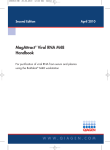
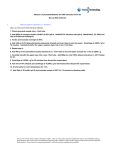
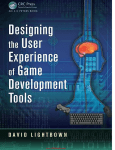

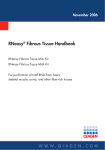
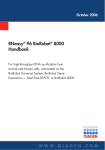
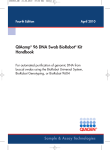
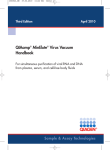
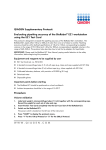

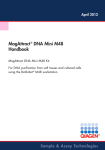
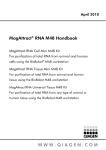
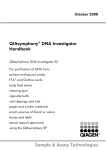
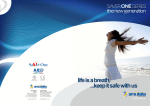
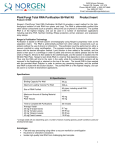



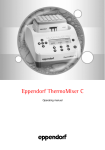

![[UK] Saver NG Data Sheets A1-2013](http://vs1.manualzilla.com/store/data/005759312_1-088a9b2c9a495b4ddfffe35115070dd1-150x150.png)
